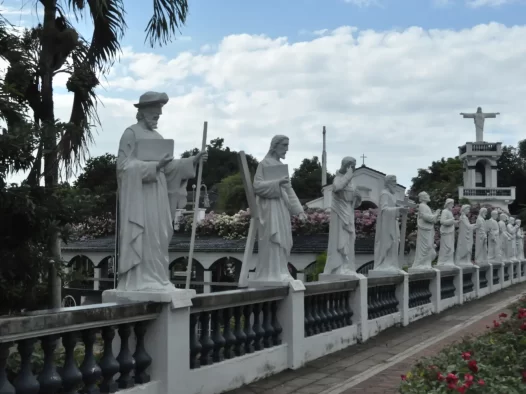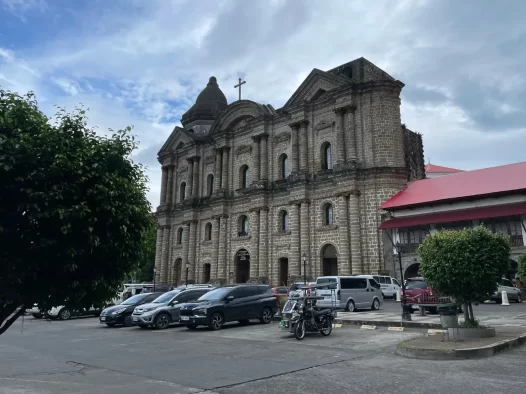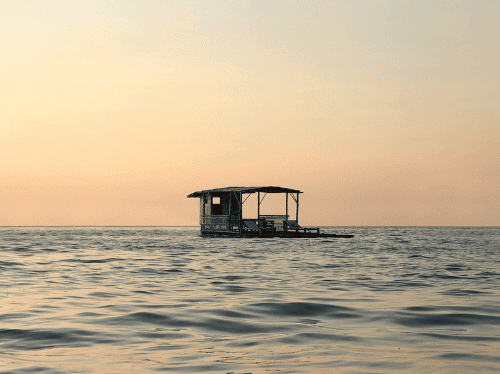Calatagan
Calatagan, a municipality located in the southwestern part of the province of Batangas, is situated on a peninsula approximately 110 kilometers south of Manila. It is surrounded by the municipalities of Lian and Balayan to the north, the Verde Island Passage to the south, Pagapas and Balayan Bays to the east, and the South China Sea to the west.
The municipal government of Calatagan is located 125 kilometers away from Manila by road, and 93 kilometers away from Batangas City, which serves as the provincial government’s seat. In the past, Calatagan was known as the Forbes Park of the South, as it was home to affluent families who owned vast estates, often disregarding the challenging road conditions by utilizing helipads for their helicopters to land.
Calatagan holds a unique historical significance, as it is the site where an exceptionally rare example of pre-Spanish Philippine script was discovered. Known as Baybayin in Tagalog, this script originated from Javanese writing, which, in turn, is derived from Brahmi. The script was found on an earthenware burial jar dating back to the 1200s or 1300s.
The municipality of Calatagan is divided into 25 barangays, each contributing to the community’s vibrant and diverse character.
History and Heritage
Calatagan, a town in the province of Batangas, derives its name from the Tagalog word “Latag,” which means a plain or flat portion of land situated between mountains or hills. This name reflects the vast expanse of wide plains that characterize Calatagan.
In the early years, historical records indicate that there were fewer than two hundred settlers who chose to establish their homes in this fertile flatland, attracted by its agricultural potential and its proximity to the sea. However, archaeological research suggests that there might have been a larger population present when the Spaniards arrived in 1890.
The town is renowned for the “Calatagan Excavations,” an important archaeological site that has yielded antique pottery and other utensils. These artifacts shed light on the culture and activities of the Filipino people before the Spanish colonization. The excavations, led by archaeologists Professor Olov T.R. Janse and Professor Robert B. Fox, as well as the conclusions drawn by Professor H. Otley Bayer, indicate the existence of a substantial pre-Spanish population in the area. The findings also suggest a direct Chinese trade route by water in Calatagan, possibly centered around a place called Balong-Bato, where an entrance through the surrounding reef is still used by vessels coming from Mindoro and Manila.
Originally known as Hacienda de Calatagan, the land occupied by the Municipality of Calatagan was acquired by Don Domingo Roxas from the Spanish crown in 1829. His successors, Don Pedro P. Roxas and Antonio P. Roxas, continued to develop the land. By the early 1900s, Calatagan had made significant progress and became an independent municipality in 1911, separating from its mother town, Balayan.
Since then, Calatagan has continued to progress and develop, providing its residents with productive and decent human settlements, while preserving its rich history and cultural heritage.
Climate
The rainy season starts in June and ends in November. When December comes, the people experienced a very cool dawn. The summer season on the month of March to the end of May.
If you prefer a hassle-free trip, you can rent a car or hire a private vehicle for more convenience and flexibility. Public transportation, such as buses and jeepneys, is also available and can be a more budget-friendly option.
Batangas: Where history, beauty, and resilience converge, creating a tapestry of captivating stories and unforgettable moments.
Kinuyog Festival
The Kinuyog Festival, an annual celebration in Calatagan, Batangas, Philippines, takes place every December 13 to 16 and showcases the vibrant culture and traditions of the local community. With the meaning “to gather” in the local language, Kinuyog perfectly captures the essence of this festive event that brings people together in joyful celebration. The festival offers a colorful spectacle of music, dance, and street performances, as the streets come alive with parades featuring elaborately decorated floats and participants donning vibrant costumes. Attendees have the opportunity to immerse themselves in the rich heritage of Calatagan through traditional dances, music, and cultural presentations, creating a memorable experience that highlights the community’s pride and unity.

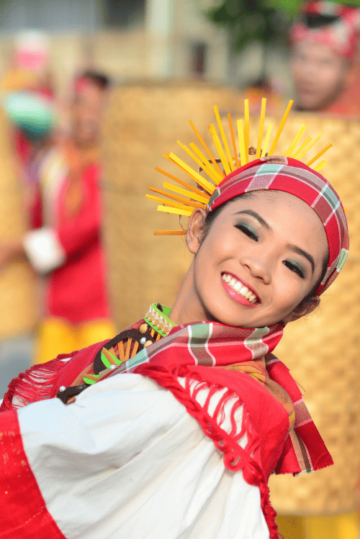
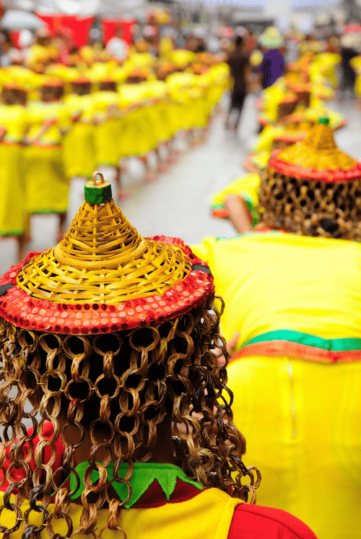
Local Attractions
Batangas in the Philippines offers a range of local attractions that cater to various interests. These are just a few of the attractions you can explore in Batangas. Whether you’re interested in history, nature, or relaxation, the city offers something for everyone.
Getting Around

Buses
Buses provide transportation for longer distances, connecting Batangas with other regions and provinces. These buses have designated terminals and offer a more comfortable option for longer journeys.

Jeepneys
Jeepneys are a staple mode of public transportation in the Philippines. They are colorful, elongated jeeps that can carry multiple passengers. Jeepneys follow specific routes and have fixed fares.

Tricycles
These motorized vehicles consist of a motorcycle with a sidecar, which can accommodate around 3 to 4 passengers. Tricycles are commonly used for short trips within the city, and fares are usually negotiable.

